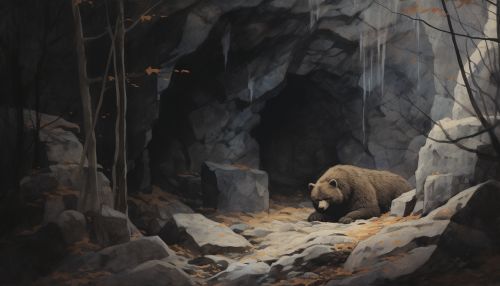Hibernation
Introduction
Hibernation is a state of metabolic inactivity in animals, characterized by lower body temperature, slower breathing, and lower metabolic rate. Hibernation helps animals to survive the winter period when food is scarce or just hard to find. Animals that hibernate are adapted to exploit and survive in seasonal environments.
Physiology of Hibernation
Hibernation involves physiological changes in an animal's body. The heart rate and breathing slow down, and the body temperature drops. In some animals, the body temperature can drop to just above freezing. This is known as torpor, a state of decreased physiological activity in an animal, usually characterized by a reduced body temperature and metabolic rate. Torpor enables animals to survive periods of reduced food availability.


The process of entering hibernation is not instantaneous. Animals go through a process called autumnal recrudescence, where they prepare for hibernation by increasing food intake and body mass. This additional weight is stored as fat, which serves as a source of energy during the hibernation period.
Hibernation in Different Species
Different species use hibernation to varying degrees and for different lengths of time. Some animals, such as the groundhog, hibernate for as long as 150 days. Others, like the black bear, hibernate for shorter periods. Some animals, like the Arctic ground squirrel, can lower their body temperature to below freezing, a phenomenon known as supercooling.
Benefits and Risks of Hibernation
Hibernation has several benefits. It allows animals to conserve energy during periods when food is scarce. It also protects them from predators, as they are hidden away and inactive. However, hibernation also carries risks. Animals are vulnerable to disturbances and predation during hibernation, and they must have stored enough energy reserves to survive the winter.
Human Hibernation
The concept of human hibernation has been explored in science fiction, but it is not currently possible for humans to hibernate in the way that many animals do. However, research into the mechanisms of hibernation and torpor in animals may one day make it possible for humans to enter a state of suspended animation, which could have applications in fields such as space travel and medicine.
